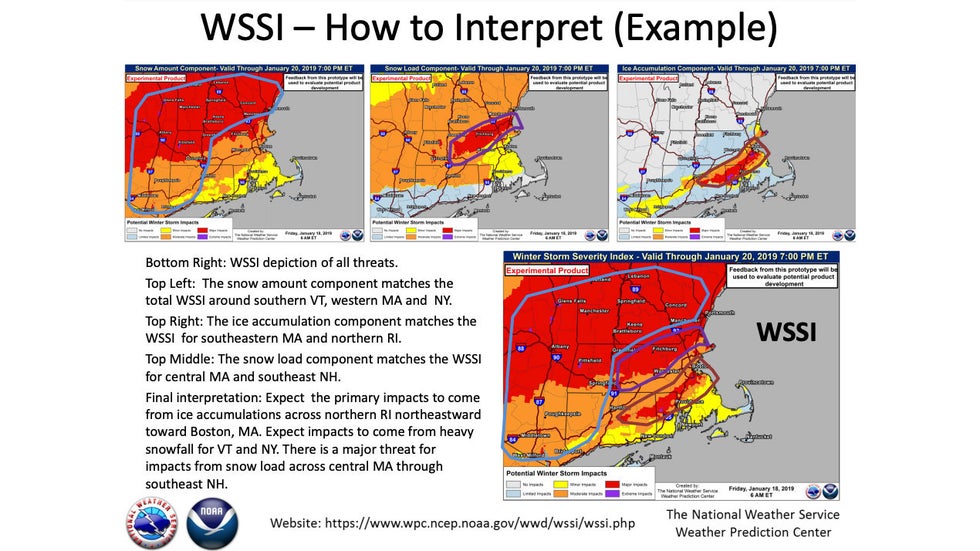
Determining exactly what a winter storm forecast means for interruptions to daily activities and travel can be difficult, but a new index developed by the National Weather Service (NWS) could help better explain that in the future.
The NWS expects the Winter Storm Severity Index (WSSI) to improve the way expected impacts from a winter storm are communicated and make it easier to make decisions by taking the guesswork out of what the forecast for snow, ice and wind means for how a given winter storm could disrupt life in your area.
This index, which is still in testing, helps takes into account all conditions that can change how significant a winter weather event is in a particular area and solves the common misconception that a storm's severity is determined just by snow totals. For instance, in some situations the greatest threat can be from ice or wind.
The NWS notes that the (WSSI) is not an exact forecast for specific impacts and is not meant to be the sole source of information about a winter storm. It also only takes into account forecast information and not conditions that occurred prior to the index being issued. This means that during an ongoing situation the WSSI will not be representative of the entire event.
There are five categories that characterize the severity potential impacts: limited, minor, moderate, major and extreme. Limited impacts represent little inconveniences while the extreme category is reserved for extreme disruptions to daily life. Extreme storms should be rare.
The WSSI looks at several aspects of snowfall, including totals, rates, water content (heavy, wet snow versus light, fluffy snow) and winds (which can lead to blowing snow or a ground blizzard). It also looks at how much ice accumulation is anticipated and whether temperatures will rapidly fall during or just after precipitation. All of these aspects suggest where damage to trees and powerlines is a greater concern. The WSSI also takes into account population density, which can exacerbate impacts.

The image above gives an example of what the index represents. The top three images show where different pieces of the index (snowfall totals, how heavy will the snow be, and ice) will be the most concerning and how those parts come together to form the WSSI index rating for each area, shown in the bottom image.
This product does not indicate when the winter weather will occur. This index is not intended to replace other forecast products, including winter storm warnings, weather weather advisories and specific hourly or daily forecasts.
More than 100 National Weather Service Offices are participating in this index test which helps to improve it by enhancing the scale with local knowledge. The WSSI will continue to be fine tuned to help better prepare everyone for winter weather events.
The Weather Company’s primary journalistic mission is to report on breaking weather news, the environment and the importance of science to our lives. This story does not necessarily represent the position of our parent company, IBM.
The Weather Company’s primary journalistic mission is to report on breaking weather news, the environment and the importance of science to our lives. This story does not necessarily represent the position of our parent company, IBM.

No comments:
Post a Comment